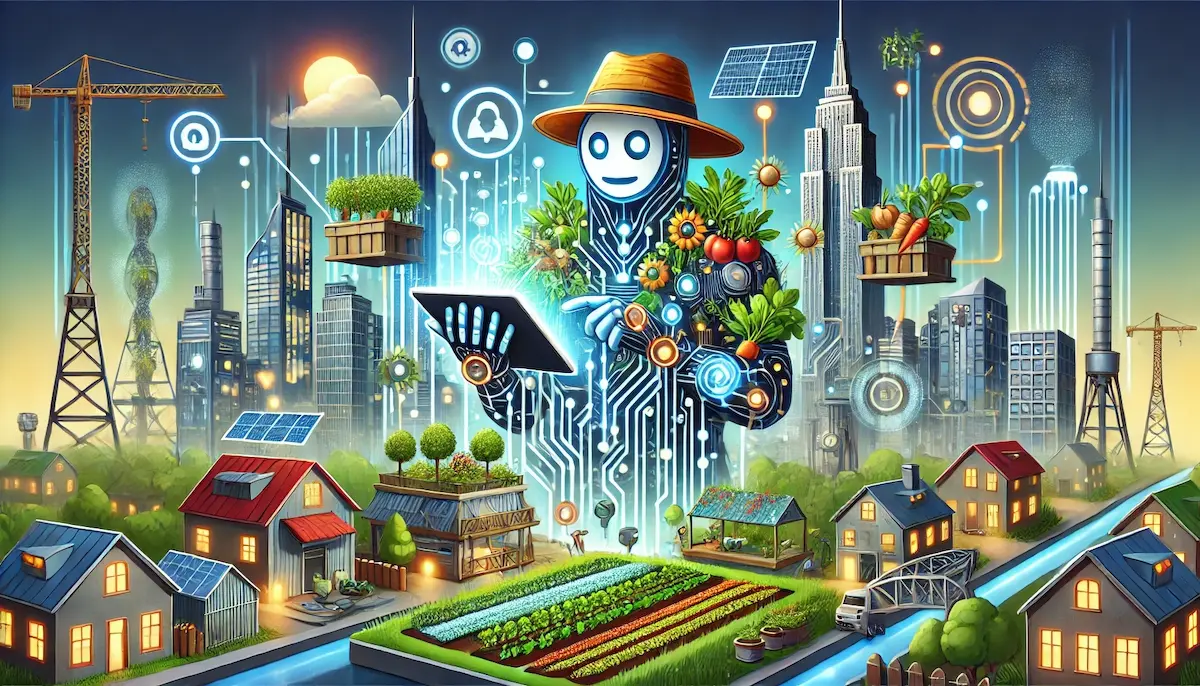Urban farming, also known as urban agriculture, is the practice of cultivating, processing, and distributing food in or around urban areas. This innovative approach to food production aims to make cities more sustainable by utilizing urban spaces for growing food, enhancing food security, and fostering community engagement.
What is Urban Farming?
Urban farming encompasses a variety of agricultural activities within urban settings. These can range from small-scale gardens on rooftops and balconies to larger community gardens, vertical farms, and hydroponic systems. The goal of urban farming is to bring food production closer to consumers, reduce the carbon footprint associated with transporting food, and provide fresh, local produce to urban populations.
Types of Urban Farming
Urban farming can take many forms, each with its unique methods and benefits. Here are some common types of urban farming:
Community Gardens
Community gardens are shared spaces where residents can grow fruits, vegetables, and herbs. These gardens are often located on vacant lots, in parks, or within housing complexes. Community gardens promote social interaction, provide educational opportunities, and offer access to fresh produce for local communities.
Rooftop Gardens
Rooftop gardens utilize the flat roofs of buildings to grow plants. These gardens can be either extensive (shallow soil depth, low maintenance) or intensive (deeper soil, more diverse plantings). Rooftop gardens help mitigate the urban heat island effect, improve air quality, and make efficient use of underutilized space.
Vertical Farming
Vertical farming involves growing crops in stacked layers, often indoors or in controlled environments. This method maximizes space and can be highly productive, using technologies like hydroponics (growing plants in nutrient-rich water) and aeroponics (growing plants in an air or mist environment). Vertical farms can be located in warehouses, shipping containers, or even repurposed buildings.
Hydroponics and Aquaponics
Hydroponics is a soilless method of growing plants using nutrient-rich water. Aquaponics combines hydroponics with aquaculture (raising fish), creating a symbiotic environment where fish waste provides nutrients for the plants, and the plants help filter and clean the water for the fish. Both methods are efficient and can be implemented in small spaces, making them ideal for urban settings.
Benefits of Urban Farming
Urban farming offers numerous benefits for individuals, communities, and the environment. Here are some of the key advantages:
Food Security
Urban farming can enhance food security by providing a local source of fresh produce. This is particularly important in urban areas with limited access to grocery stores or where food deserts exist. By growing food locally, urban farming reduces reliance on distant supply chains and ensures a steady supply of nutritious food.
Environmental Sustainability
Urban farming promotes environmental sustainability by reducing the carbon footprint associated with transporting food over long distances. It also encourages the use of sustainable growing practices, such as organic farming and water conservation. Additionally, urban farms can contribute to biodiversity by providing habitats for pollinators and other wildlife.
Economic Opportunities
Urban farming can create economic opportunities by generating jobs and supporting local businesses. Farmers’ markets, community-supported agriculture (CSA) programs, and farm-to-table initiatives allow urban farmers to sell their produce directly to consumers, fostering local economies and strengthening community ties.
Health and Well-being
Access to fresh, locally grown produce can improve dietary habits and overall health. Urban farming also promotes physical activity and mental well-being by providing opportunities for gardening and outdoor engagement. Community gardens, in particular, offer social benefits by bringing people together and fostering a sense of community.
Challenges of Urban Farming
While urban farming has many benefits, it also faces several challenges:
Space Constraints
Finding suitable land for urban farming can be difficult, especially in densely populated cities. Innovative solutions, such as vertical farming and rooftop gardens, are helping to overcome these space limitations.
Soil Contamination
Urban soils may be contaminated with heavy metals or other pollutants, posing a risk to food safety. Urban farmers often use raised beds, imported soil, or soilless growing methods to mitigate this issue.
Water Access
Securing a reliable water source for urban farms can be challenging. Urban farmers may need to invest in rainwater harvesting systems, efficient irrigation techniques, or partnerships with local authorities to ensure adequate water supply.
Conclusion
Urban farming is a promising approach to making cities more sustainable, resilient, and self-sufficient. By bringing food production closer to where people live, urban farming can enhance food security, promote environmental sustainability, create economic opportunities, and improve health and well-being. As cities continue to grow, urban farming will play a crucial role in shaping a more sustainable future.
Blockfine thanks you for reading and hopes you found this article helpful.
